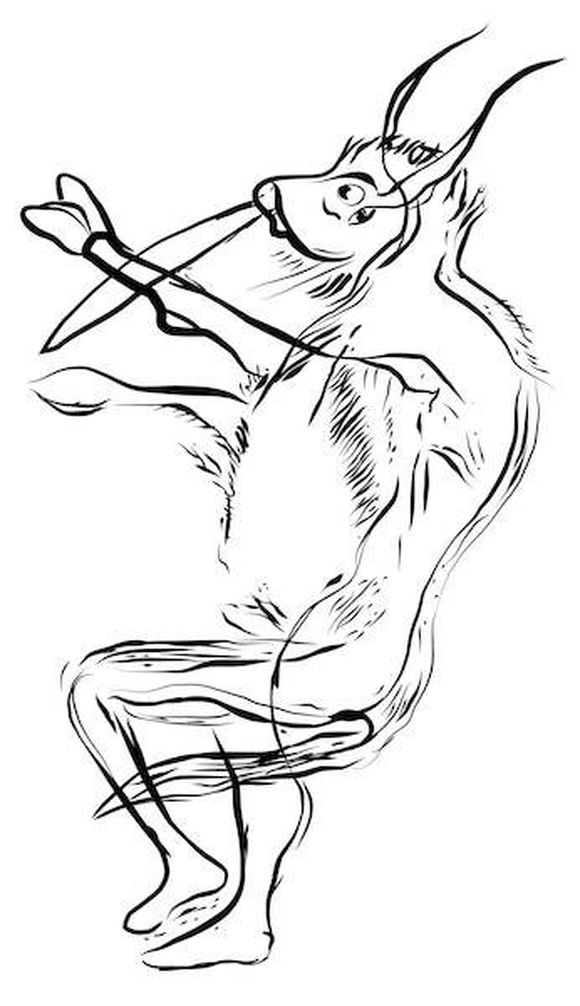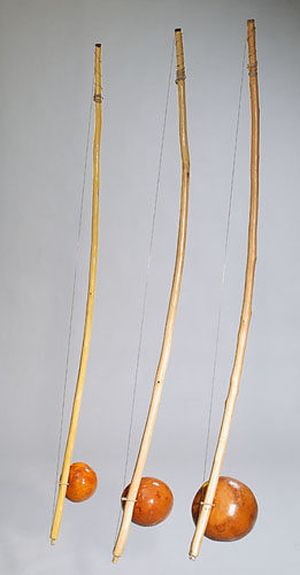2. Historical Background
There's no certainty, but the origins likely date back to around 15,000 - 10,000 BC. A cave painting discovered in the Dordogne region of southern France, specifically in the Cave of the Three Brothers (French: Grotte des Trois-Frères), depicted two beings (half-human and half-bison). This cave painting is referred to as the "Sorcerer with a Musical Bow" or "petit sorcier à l‘arc Musical" as it appears that the "animal-human" is playing a mouth bow.

The Sorcerer of Trois Frères
(https://www.praehistorische-archaeologie.de/)
However, it's essential to note that this is only a presumption.
What's fairly certain is that the arched bow likely evolved into the bow used in string instruments. The musical bow is one of the easiest instruments to create. It involves stringing one or more strings between the ends of a curved stick.

Berimbau (single-string percussion instrument from Brazil)
The earliest hint of an instrument played with a bow possibly dates back to the 8th century. On an ancient Armenian glass vase, probably from the 9th century, there is an image of a musician with a bow.
In China, as early as the 9th century, there were two string instruments played with a bamboo bow. These instruments were called Xiqin and Yazheng.
Until then, string tension was created with the thumb. It wasn't until the 18th century that the frog was tensioned with a screw, allowing for more precise adjustments to the string tension.
In our inventory, we offer bows inspired by various historical bow makers:
Francois Tourte ( 1747 - 1835)
Dominique Peccatte (1810 - 1874)
Hermann Richard Pfretzschner (1857 - 1921)
Eugène Sartory (1871 - 1946)




